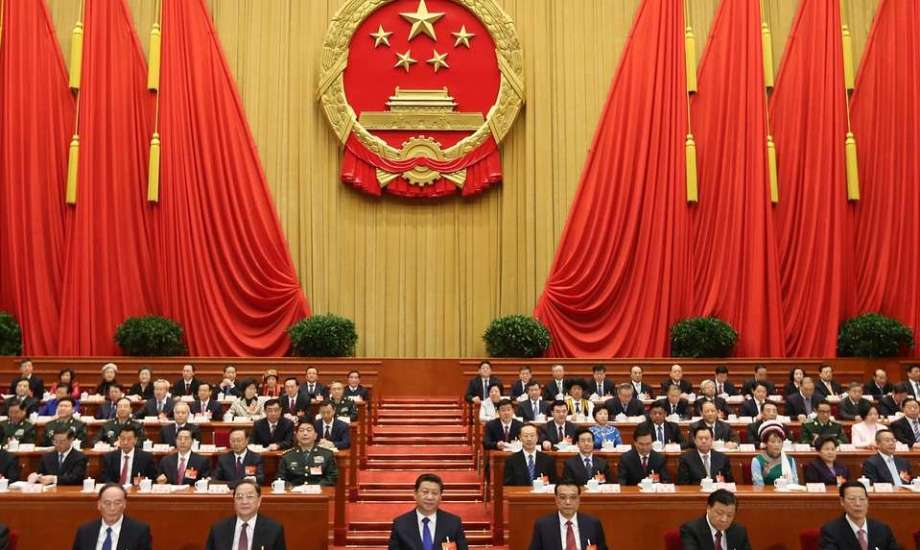The Communist Party of China has commenced four days of closed-door deliberations aimed at setting major economic directions for the coming years in the Asian giant. These discussions come amid challenges such as slowing economic growth and escalating international trade tensions.
The plenary session of the Central Committee, regarded as the party’s internal parliament, has gathered approximately 200 full members and 170 alternate members to establish strategic priorities for the world’s second-largest economy.
This meeting will focus on reviewing and debating socioeconomic proposals that will form the foundation of the 15th Five-Year Plan (2026–2030). The plan is expected to play a pivotal role in advancing President Xi Jinping’s long-term strategic goals, particularly efforts to achieve technological self-reliance and strengthen the nation’s overall economic resilience.
Xi is set to preside over the session, scheduled to conclude on Thursday. Authorities are anticipated to release a comprehensive document summarizing key decisions and policy directives following the conclusion of the talks.
The current economic climate presents significant hurdles. China’s economy faces both domestic and external pressures, including sluggish domestic consumption, an ongoing real estate sector crisis, and persistent trade disputes with the United States.
Tiwu Mefissen, an economist at Rabobank, noted in a recent analytical note that although such plenary sessions may receive less media attention than other political events, they serve as the primary platform for shaping the country’s overarching strategic course.
He emphasized that, given the sheer scale of China’s economy, the outcomes of these discussions will have clear and far-reaching global implications.
Economic experts have long stressed the need for China to shift its growth model from one driven by infrastructure investment and exports to one anchored in domestic consumption. Household demand remains relatively weak compared to pre-COVID-19 levels.
Another key topic under discussion is industrial overcapacity, which has led to supply surpluses in certain sectors and contributed to current trade frictions with foreign partners.
Sarah Tan, an economist at Moody’s Analytics, told AFP: “We expect a more coordinated policy approach that simultaneously addresses excess production capacity while stimulating internal demand.”
— news from (الجريدة العقارية)
— News Original —
الصين تبدأ مناقشات حاسمة لتحديد المسار الاقتصادي للسنوات الأربع القادمة
يبدأ الحزب الشيوعي الصيني، أربعة أيام من المداولات خلف الأبواب المغلقة، بهدف تحديد التوجهات الاقتصادية الكبرى للسنوات المقبلة في هذه الدولة الآسيوية العملاقة. تأتي هذه المناقشات في ظل التحديات المتمثلة في تباطؤ النمو الاقتصادي وتصاعد التensionات التجارية الدولية. n nستجمع هذه الجلسة العامة للجنة المركزية، التي تُعد بمثابة البرلمان الخاص بالحزب، قرابة مئتي (200) عضو أصلي ومئة وسبعين (170) عضواً مناوباً، وذلك لوضع الأولويات الاستراتيجية لثاني أكبر اقتصاد في العالم. n nوسيُكرَّس هذا الاجتماع لعرض ومناقشة المقترحات الاقتصادية والاجتماعية التي ستُشكّل أساس الخطة الخمسية الخامسة عشرة (2026 – 2030). n nتلعب هذه الخطة دوراً محورياً في تحقيق الأهداف الاستراتيجية الكبرى التي وضعها الرئيس شي جينبينغ، لا سيما ما يتعلق بمساعي البلاد نحو تحقيق الاكتفاء الذاتي التكنولوجي وتعزيز القدرات الاقتصادية الشاملة. n nومن المقرر أن يرأس شي الاجتماع الذي من المفترض أن يُختتم يوم الخميس، ويُتوقع أن تنشر السلطات عقب انتهائه وثيقة مطولة تُجمل وتلخص القرارات والتوجيهات الرئيسية. n nتحديات السياق الاقتصادي n nتُعقد هذه الجلسة في سياق اقتصادي يتسم بعدم الاستقرار، حيث يواجه الاقتصاد الصيني تحديات داخلية وخارجية، أبرزها: ضعف الاستهلاك الداخلي، والأزمة المستمرة في قطاع العقارات، واستمرار الاضطرابات والاشتباكات التجارية مع الولايات المتحدة. n nوفي هذا الصدد، أشار الخبير الاقتصادي “تيوو ميفيسن” من “رابوبنك” في مذكرة تحليلية حديثة إلى أن الجلسات العامة، ورغم أنها قد تحظى باهتمام إعلامي أقل من غيرها من الفعاليات السياسية، إلا أنها تُعد المنبر الأساسي الذي تُناقش وتُقر فيه التوجهات الاستراتيجية الكبرى للبلاد. n nوأكد على أن هذه القرارات، بالنظر إلى الثقل الهائل للاقتصاد الصيني، تحمل تداعيات واضحة ومباشرة على الصعيد العالمي. n nالأولويات الاستراتيجية المطروحة n nلطالما أكد عدد من الخبراء الاقتصاديين على مدار السنوات الماضية ضرورة تحويل نموذج النمو الصيني ليصبح قائماً على الاستهلاك الداخلي، بدلاً من الاعتماد التقليدي على الاستثمار في البنى التحتية والتصدير كمحركات رئيسية. n nويُلاحظ أن الطلب الاستهلاكي للأسر لا يزال ضعيفاً نسبياً مقارنة بما كان عليه قبل جائحة “كوفيد-19”. n nومن بين المحاور الرئيسية الأخرى التي سيناقشها المشاركون في الجلسة العامة، مسألة الفائض في القدرات الصناعية، والتي أدت إلى فائض في العرض في بعض القطاعات، مما يغذي التوترات التجارية الحالية مع الشركاء الأجانب. n nوفي هذا السياق، ذكرت الخبيرة الاقتصادية “سارة تان” من “موديز أناليتيكس” لوكالة “فرانس برس”: “نتوقع أن يتم تبني سياسة أكثر تنسيقاً تهدف في آن واحد إلى الحد من فائض القدرات الإنتاجية وفي الوقت ذاته تحفيز الطلب الداخلي”.
